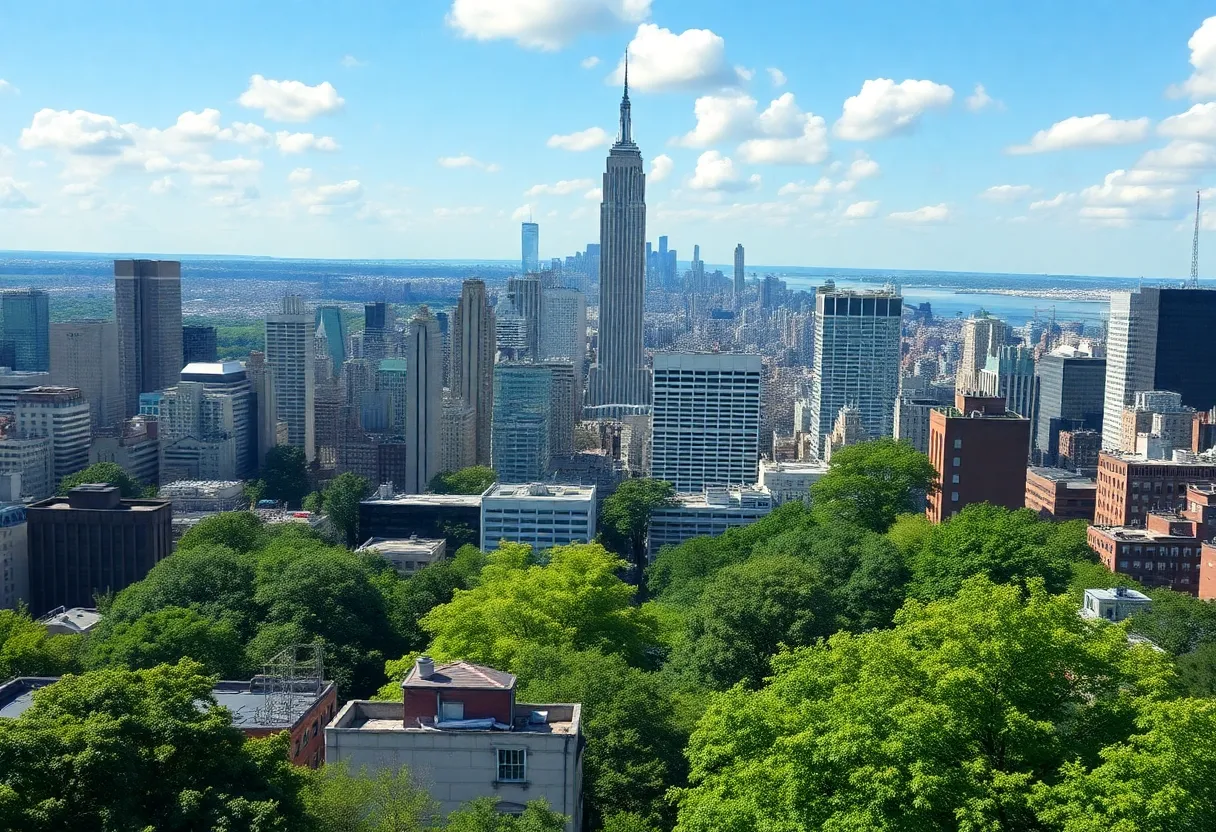News Summary
A ruling by Ulster County Supreme Court Justice Julian Schreibman raises concerns that New York State may be violating its climate law due to regulatory delays. The court’s skepticism towards the Department of Environmental Conservation’s excuses for inaction emphasizes the urgent need to meet emissions reduction targets. Environmental advocates argue that the state’s failure to implement necessary regulations undermines its commitment to reducing greenhouse gas emissions, particularly after the paused cap-and-invest policy. The outcome of this case could significantly shape New York’s climate policies moving forward.
New York — A ruling by Ulster County Supreme Court Justice Julian Schreibman suggests that New York State may be in violation of its climate law due to regulatory delays that hinder efforts to meet critical emissions reduction targets. During a recent court hearing, the judge indicated skepticism towards the state’s assertion that the Department of Environmental Conservation (DEC) requires flexibility amid “change and uncertainty,” reinforcing concerns raised by environmental advocacy groups.
The climate justice lawsuit, filed by four organizations in March 2023, argues that the state has not implemented necessary regulations to achieve the emissions reduction goals outlined in the Climate Leadership and Community Protection Act (CLCPA). The plaintiffs contend that New York’s failure to enforce these regulations, particularly the halted cap-and-invest policy, undermines the state’s legislative commitment to reducing greenhouse gas emissions.
Justice Schreibman pointed out that legal precedents strongly favor the plaintiffs’ argument, suggesting that the DEC’s current inaction may not be justifiable. The DEC has been required by law to issue specific regulations aimed at substantial emissions cuts by 2024; however, this deadline has already been missed. In January 2023, Governor Kathy Hochul paused the implementation of the cap-and-invest policy, further contributing to setbacks in the state’s climate strategy.
The Hochul administration cites various challenges, including economic disruptions and federal resistance to climate initiatives, as reasons for the delay in rolling out proposed regulations. During the court hearing, DEC’s legal representative described climate change as a long-term issue, insisting that the agency is diligently working on potential solutions. However, the judge criticized the DEC for what he perceived as a lack of decisive action, emphasizing that prevailing economic conditions should not impede legal compliance.
While Justice Schreibman hinted that he might not require immediate compliance in alignment with the plaintiffs’ proposed timeline, he indicated that the state could pursue an appeal if his ruling were unfavorable. This could extend the legal process beyond the reelection of Governor Hochul in 2026, potentially pushing discussions of carbon pricing to late 2027.
Progress towards meeting the climate law’s demand for a 40% reduction in emissions by 2030 appears increasingly difficult, with state assessments projecting that the target will continue to be missed until at least 2036. This has raised concerns among environmental advocates, who argue that New York’s current policies reflect a retreat from prior commitments to ambitious climate action made during the tenure of former Governor Andrew Cuomo.
The DEC has thus far only proposed minor regulations, which the plaintiffs argue fall short of meeting the CLCPA’s ambitious goals. Following public hearings, the department gathered substantial public feedback supporting the reinstatement of the cap-and-invest program, reflecting widespread demand for robust climate actions from New York’s leadership.
As the case progresses, the question of whether New York State will maintain its current pace in addressing climate regulations hangs heavily on the upcoming judicial decision from Justice Schreibman. Environmental organizations have maintained that the state’s inaction contradicts the intent behind the climate law, urging for quicker and more effective measures to combat climate change.
With continued scrutiny on the Hochul administration’s climate policies, the response to this critical legal case may shape New York’s approach to climate issues for years to come. The legal outcomes could pave the way for a renewed commitment to reducing emissions, but uncertainty remains as stakeholders await the court’s decision.
Deeper Dive: News & Info About This Topic
- NYsFocus: New York Climate Law Lawsuit
- Vinson & Elkins: New York Passes Climate Superfund Legislation
- Spectrum Local News: Hudson Valley Power Plant Permit Decision
- New York Times: Zohran Mamdani on Climate Law 97
- NY1: Hochul’s Climate Law Deadline Statement
- Wikipedia: Climate Change in New York

Author: STAFF HERE NEW YORK WRITER
The NEW YORK STAFF WRITER represents the experienced team at HERENewYork.com, your go-to source for actionable local news and information in New York, the five boroughs, and beyond. Specializing in "news you can use," we cover essential topics like product reviews for personal and business needs, local business directories, politics, real estate trends, neighborhood insights, and state news affecting the area—with deep expertise drawn from years of dedicated reporting and strong community input, including local press releases and business updates. We deliver top reporting on high-value events such as New York Fashion Week, Macy's Thanksgiving Day Parade, and Tribeca Film Festival. Our coverage extends to key organizations like the Greater New York Chamber of Commerce and United Way of New York, plus leading businesses in finance and media that power the local economy such as JPMorgan Chase, Goldman Sachs, and Bloomberg. As part of the broader HERE network, including HEREBuffalo.com, we provide comprehensive, credible insights into New York's dynamic landscape.





